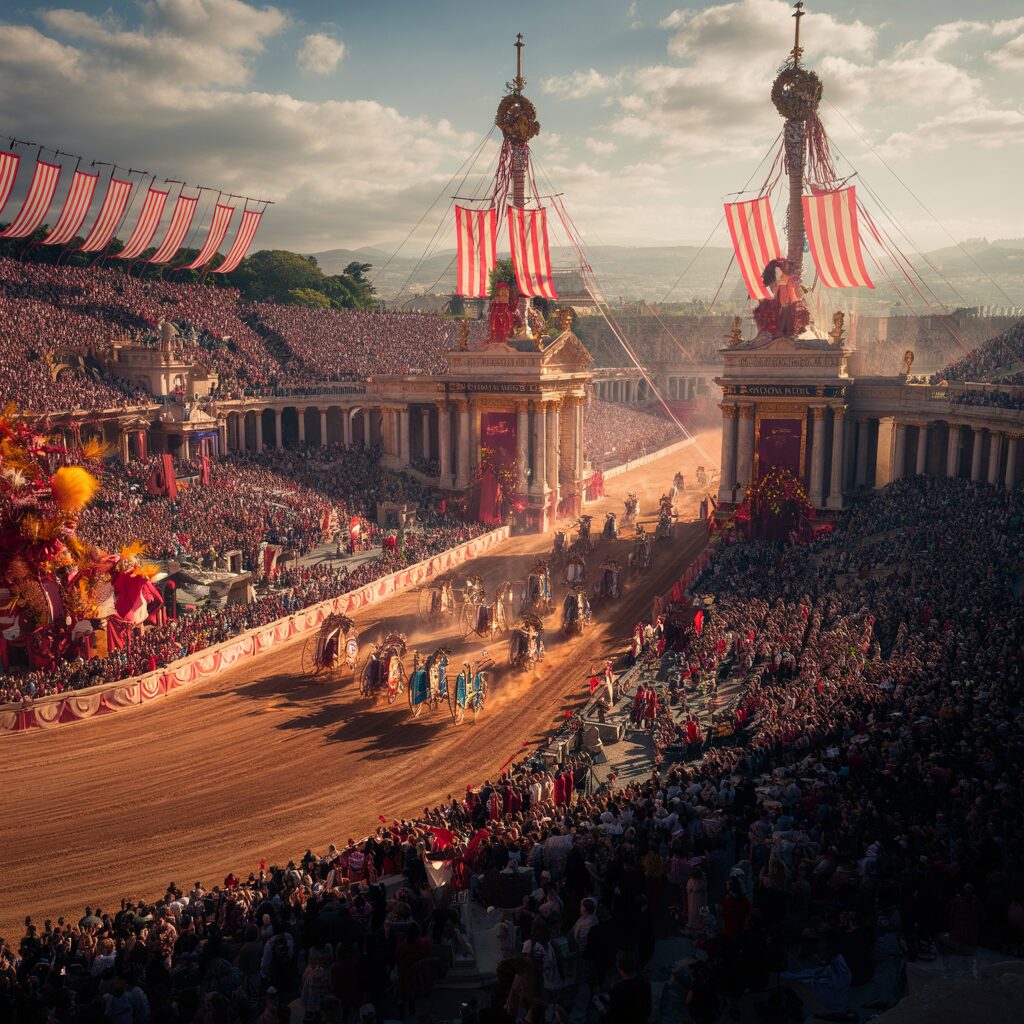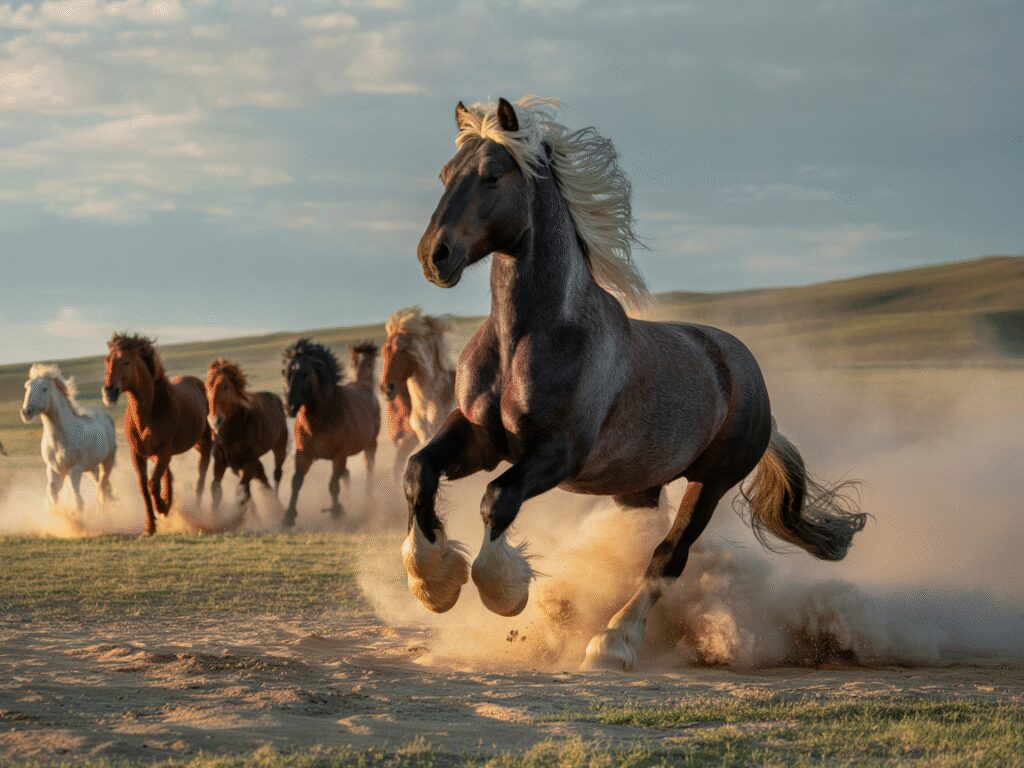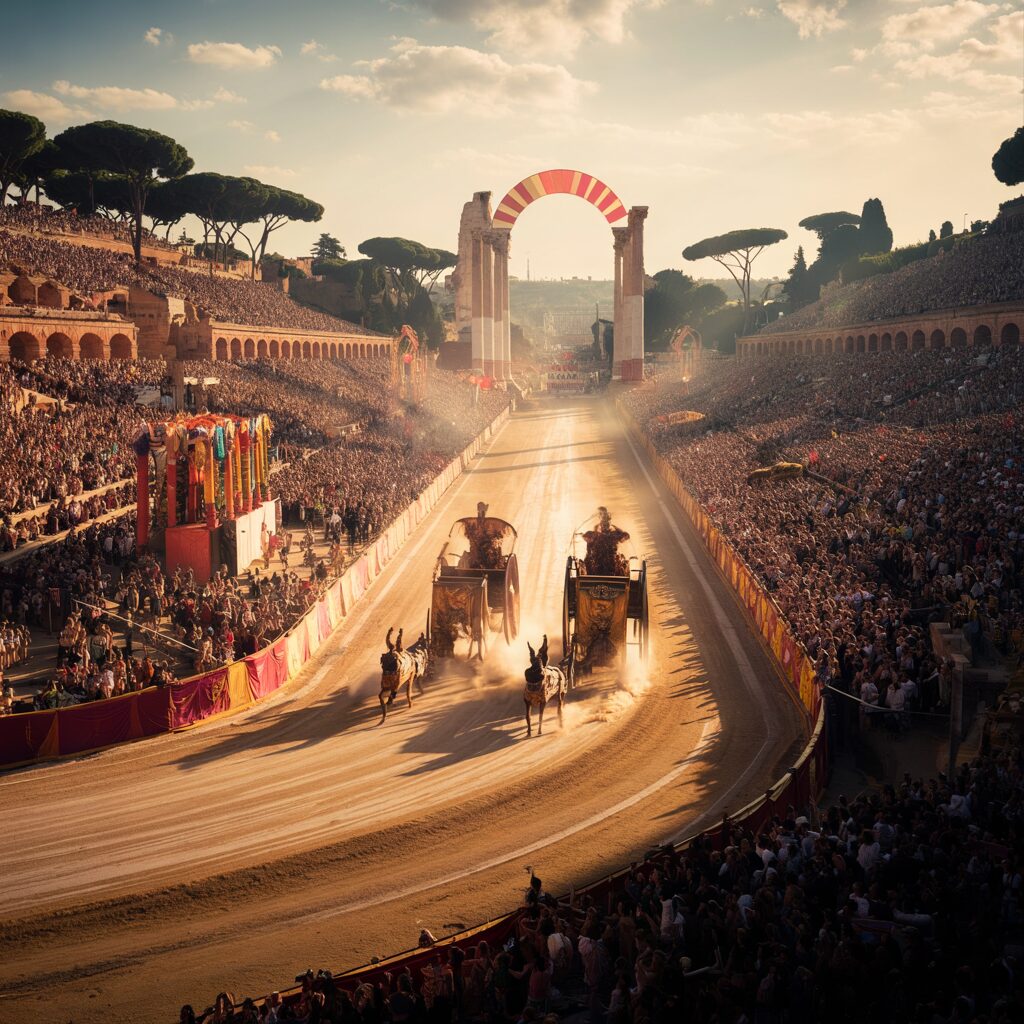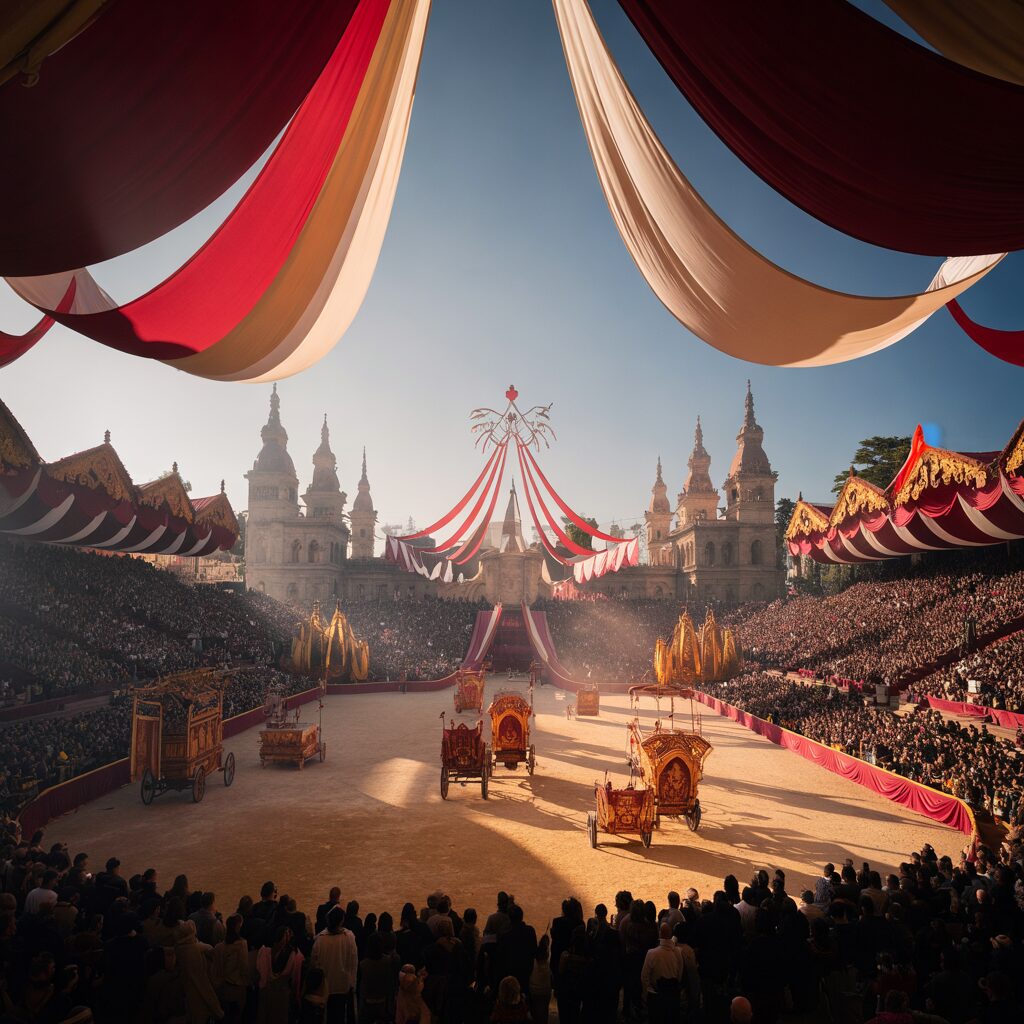Ancient Roman sports were an important part of Roman society, serving as entertainment, a way for people to come together, and a display of power. These activities were more than just hobbies; they were vibrant expressions of Roman culture and identity.
While the ancient Olympic Games, based on Greek tradition, focused on athletic competitions like running, wrestling, and the pentathlon, the Romans created their own unique sporting culture with very different spectacles.
This article explores Ancient Roman Sports That Didn’t Make It to the Olympics. You’ll learn about:
- The grand festivals known as ludi that featured diverse events.
- The brutal world of gladiators fighting for survival.
- The high-speed thrills of chariot racing at the Circus Maximus.
- Epic staged naval battles called naumachiae.
- Cultural contests that celebrated Roman values beyond physical competition.
Discover how these unique Roman entertainments shaped history and left a legacy separate from the Olympic tradition.

Ludi: The Grand Festivals of Ancient Rome
Ludi refers to public games and festivals that played a central role in Roman culture. These events were not just entertainment; they served political, religious, and social purposes, reinforcing community bonds and celebrating Roman identity. Unlike Greek athletic contests focused on individual competition, ludi were grand spectacles sponsored by the state or wealthy patrons to honor gods, commemorate victories, or appease the populace.
Types of Ludi
Several types of ludi took place throughout the year:
- Ludi Romani: The oldest and most prestigious Roman festival held in September, dedicated primarily to Jupiter. Events included chariot races, theatrical performances, and athletic contests.
- Ludi Plebeii: Celebrated in November, these games honored plebeian rights and featured a variety of competitions similar to the Ludi Romani but with a more populist focus. This reflects the broader social class divide in ancient Rome, where daily life varied greatly between patricians and plebeians.
- Other ludi occurred sporadically for specific deities or occasions, such as the Ludi Apollinares or Ludi Megalenses.
Events during these festivals showcased diverse forms of entertainment:
- Chariot races attracted massive crowds at venues like the Circus Maximus.
- Theatrical plays and poetry recitals highlighted Roman cultural achievements.
- Athletic contests, though less emphasized compared to Greek traditions, included footraces and wrestling matches.
- Religious ceremonies often accompanied the games, linking spectacle with spirituality.
These public games were integral to Roman life, combining sport, religion, and theater into large-scale festivals that reflected Rome’s values and social structure. The ludi created an arena where citizens could gather en masse for shared experiences far removed from the Olympic ideals of individual glory.
Significance of Ludi
The significance of these festivals extended beyond mere entertainment. They were a reflection of Roman engineering feats, which facilitated the organization and execution of such grand events. Furthermore, the influence of Roman mythology on modern culture can be traced back to these festivals which often celebrated mythological themes.
Additionally, the philosophical underpinnings of some aspects of these public games can be linked to the rise of Stoicism in Rome, a school of thought that emphasized living in harmony with nature and using reason as paths to achieving human flourishing. Lastly, understanding these festivals also provides insight into the historical transition from monarchy to a republican system during the birth of the Roman Republic, a pivotal moment that shaped modern political structures.
Gladiatorial Combat: The Blood Sport of the Colosseum
Gladiatorial combat was a central aspect of Roman entertainment, captivating audiences with its mix of danger and spectacle. These brutal contests took place in grand amphitheaters across the empire, with the Colosseum in Rome being the most iconic venue for such blood sports.
The Life of a Gladiator
The life of a gladiator was harsh and demanding. They underwent intense physical training and lived in barracks under strict discipline. However, some volunteered for this path seeking glory and recognition. The Gladiators: Heroes or Victims of Roman Entertainment? explores the duality of their existence. Despite their status as social outcasts, gladiators could earn fame and even freedom through their victories.
Roman Values on Display
The spectacle of gladiatorial combat not only entertained the masses but also served as a display of Roman values like courage, honor, and resilience. It is essential to understand the broader social dynamics to fully grasp the significance of these events. The Lives of Plebeians: Rome’s Common People provides insight into the lives of the common people who made up the audience for these brutal spectacles.
The Colosseum: A Symbol of Roman Culture
The Colosseum stands testament to this violent yet captivating aspect of Roman culture, where thousands gathered to witness these deadly duels. The popularity of gladiatorial games endured for centuries, reflecting the complex relationship between violence, entertainment, and societal norms in ancient Rome.
Artistic Influences
Furthermore, this era was marked by remarkable artistic expressions that were heavily influenced by earlier Greek and Etruscan traditions. Art and Culture in Ancient Rome: A Journey Through Sculpture and Mosaics delves into this rich cultural landscape.
The Patricians: Masters of Roman Luxury and Power
In contrast to the common people and gladiators, there existed a powerful elite known as patricians. The Patricians: Masters of Roman Luxury and Power sheds light on their wealth and influence in ancient Rome.

Chariot Racing: The Thrilling Spectacle at the Circus Maximus
Chariot racing was a beloved sport in ancient Rome, captivating large crowds at venues like the Circus Maximus with its thrilling races. The Circus Maximus, an iconic venue for chariot races, could accommodate over 150,000 spectators, showcasing the immense popularity of this sport among the Romans.
Key Points:
- Charioteers were the daring souls who risked life and limb for glory and riches in this fast-paced and perilous sport. They hailed from diverse backgrounds, ranging from slaves and freedmen to nobles seeking fame on the racetrack.
- The charioteers’ skills were put to the ultimate test as they navigated sharp turns and jostled for position in races that often led to spectacular crashes and intense rivalries. The factions or teams they represented, such as the Blues, Greens, Reds, and Whites, had passionate fan bases that added to the excitement of the events.
- Beyond mere entertainment, chariot racing held deeper cultural significance in Roman society. It symbolized themes of power, status, and competition, mirroring the cutthroat politics and social dynamics of the time. The charioteers became celebrities of their era, admired for their bravery and skill in mastering these powerful racing machines.
Chariot racing was not just a sport but a spectacle that embodied the spirit of ancient Rome—bold, extravagant, and fiercely competitive. The legacy of chariot racing endures as a testament to the enduring appeal of ancient Roman sports that continue to fascinate us today.
This fascination with ancient Roman culture is further explored in various platforms including role-playing games where enthusiasts delve into immersive experiences reflecting this rich history or through exploration into ancient Rome’s past which offers insights into its evolution from a small settlement to one of the most powerful empires in history.

Naumachiae: Epic Naval Battles Staged for Entertainment
Naumachiae were grandiose mock naval battles staged to captivate Roman audiences with dramatic displays of maritime warfare. Unlike traditional sports that took place on land, these spectacles involved flooding arenas or specially constructed basins to recreate authentic naval combat scenes. The term naumachiae itself derives from the Greek words for “ship” (naus) and “battle” (machē), highlighting the theatrical nature of these events.
Engineering the Venue
Romans engineered entire venues or adapted existing amphitheaters by filling them with water, turning them into temporary lakes where ships could maneuver and clash. Some naumachiae were held in natural bodies of water or artificial lakes built specifically for such performances, like the one reportedly created by Julius Caesar near the Tiber River.
The Scale of Production
The scale of these productions was immense:
- Construction of warships: Organizers built full-sized replicas of military vessels, complete with oarsmen and armed fighters, ensuring realism during the engagements.
- Recruitment of participants: Combatants included prisoners of war, condemned criminals, or slaves trained to fight as sailors and soldiers. Their participation often meant risking life and limb, lending a brutal authenticity to the spectacle.
- Choreography and safety: Despite their violent appearance, many naumachiae followed rehearsed sequences to balance spectacle with minimizing casualties—yet accidents and fatalities still occurred.
Purpose Beyond Entertainment
Naumachiae served multiple purposes beyond entertainment. They demonstrated imperial power and engineering prowess while reinforcing Rome’s naval dominance symbolically. Emperors who sponsored these events used them as political tools to impress citizens and rivals alike.
These staged Roman naval battles stand apart from Olympic contests by focusing on elaborate pageantry and immersive experience rather than athletic competition alone.

Cultural Contests and Festivals: A Celebration of Roman Identity through Sport
Cultural contests played a crucial role in reflecting Roman values and fostering a strong sense of community among its citizens. These non-violent competitions held during festivals served as a platform for showcasing the diverse talents and creativity of the Roman people, celebrating their rich cultural heritage.
1. Showcasing Roman Values
Cultural contests were not just about entertainment but also about upholding the core values that defined Roman society. Through events like poetry recitals, theatrical performances, and music competitions, Romans emphasized the importance of eloquence, artistic expression, and intellectual pursuits.
2. Fostering Community Spirit
These festivals provided an opportunity for people from all walks of life to come together and bond over shared interests. Citizens would gather in amphitheaters or public squares to witness these cultural displays, strengthening social ties and promoting unity among the populace.
3. Examples of Non-Violent Competitions
Poetry Recitals: Poets would compete by reciting their verses before an audience and esteemed judges, showcasing their mastery of language and rhetoric.
Theatrical Performances: Actors and playwrights would stage elaborate plays featuring themes from Roman mythology or historical events, captivating the crowds with their storytelling skills.
Music Competitions: Musicians would demonstrate their virtuosity on instruments like the lyre or flute, enchanting listeners with melodies that echoed through the streets of Rome.
These cultural contests not only entertained the masses but also served as a reminder of what it meant to be Roman, reinforcing a collective identity based on shared traditions and artistic excellence.
However, it’s essential to recognize that these cultural expressions were deeply intertwined with other aspects of Roman life, such as agriculture, which played a crucial role in economic growth. Additionally, religion was not merely a set of beliefs but a comprehensive system that influenced every aspect of their lives. The Roman Army, known for its military might, also shaped the empire significantly. Furthermore, Roman architecture showcased their innovative spirit while Roman roads facilitated trade and movement across the vast empire.
The Enduring Legacy of Non-Olympic Roman Sports
The legacy of Ancient Roman Sports That Didn’t Make It to the Olympics lives on through various aspects of modern sports and entertainment. From the grandeur of gladiatorial combat to the thrill of chariot racing, these ancient spectacles have left a lasting impact on our contemporary sporting culture. The influence of Roman sports can be seen in:
Entertainment: Elements of Roman spectacles, such as epic battles and thrilling races, have inspired modern forms of entertainment like action movies and extreme sports.
Team Sports: The competitive spirit and teamwork displayed in Roman chariot racing have influenced team sports around the world, emphasizing collaboration and strategy.
Cultural Festivals: The tradition of showcasing cultural values through sports and festivals continues today, fostering a sense of community and identity among participants.
In essence, the legacy of non-Olympic Roman sports endures in our appreciation for athleticism, competition, and the celebration of human achievement across different sporting disciplines. This legacy is part of a larger narrative about the enduring influence of ancient Rome on Western civilization, which has shaped various aspects of modern society including governance structures that resonate with today’s democracies as seen in the structure of power during the Roman Republic. Furthermore, understanding the rise and fall of the Roman Empire helps us appreciate how this ancient civilization has left an indelible mark on politics, culture, and society worldwide.

